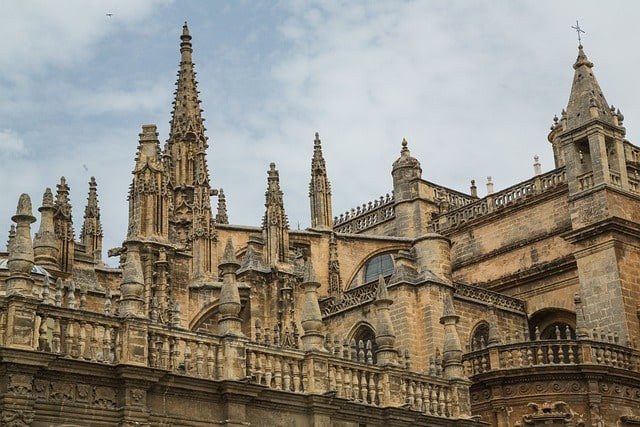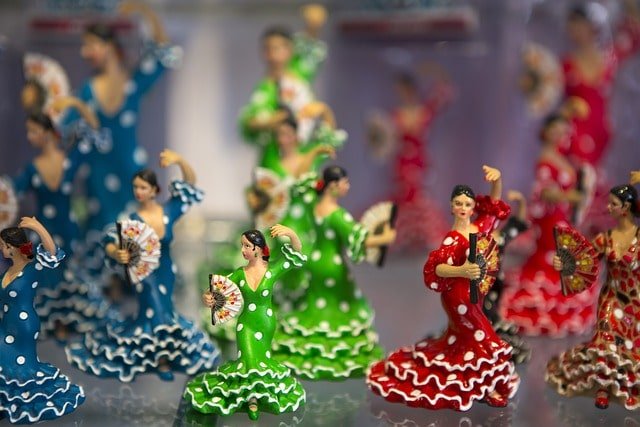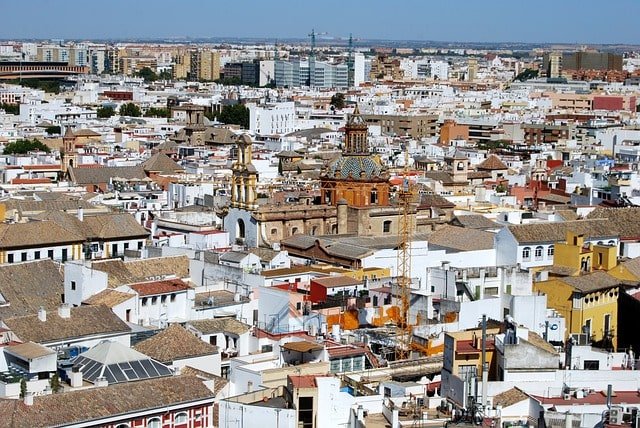Spain's Charming City of Seville
Discover Spain's charming city of Seville, located in Andalusia
Sevilla is in Andalusia’s heart, the largest city in southern Spain. Its history extends back over 2,200 years. The city sits near the River Guadalquivir with about 700,000 people calling it home. It is the fourth largest city in Spain. Sevilla stands out for its cultural, political, economic, and artistic importance in the south.
Sevilla is known for its vast historic center, the biggest in Europe. It’s home to the Real Alcázar palace, Seville Cathedral, and Archive of the Indies, all UNESCO sites. The Seville Cathedral is among the world’s biggest. And the Real Alcázar is considered the top spot in the city.
Visit Sevilla, and you’ll quickly fall in love with its unique culture and stunning buildings. The city lives by the motto “NO8DO,” which means “She has not abandoned me.” Plan to spend a couple of days seeing landmarks like the Seville Cathedral and Real Alcázar. Sevilla is at its best in spring, when the air is filled with the smell of jasmine and oranges. It’s the perfect time to see the city come alive.
Hotel Directly in Seville:
Villa Directly in Seville:
The Rich History of Sevilla

Sevilla’s history is like a detailed tapestry, combining various influences and events. These have created its unique character over the years. The city started as the Roman city, Hispalis, forming a base for its cultural richness.
Over time, Sevilla changed greatly, especially during the Islamic and Baroque ages.
Roman and Islamic Influences
In ancient times, Sevilla was the Roman city of Hispalis, a key urban center. After the Islamic conquest, it was renamed Ishbiliyah and became a thriving independent taifa.
It was a center of culture and prosperity, blending Roman and Islamic influences. Even after becoming part of the Crown of Castile in 1248, this mix continued to shape Sevilla’s culture and architecture.
The Baroque Period
The Baroque period was a time of great wealth for Sevilla. In the 16th century, it was the main hub of Spain’s trade with the Americas, with a peak population of 150,000. Even the Great Plague of 1649, which reduced the city’s population in half, couldn’t stop its cultural progress.
This time saw the building of 73 new convents and the Royal Tobacco Factory in 1728. Although trade with the Americas later moved to Cádiz, Sevilla’s Baroque era remains significant in its history and culture.
Iconic Landmarks to Visit
Sevilla welcomes you with a tapestry of history and stunning architecture. Its landmarks showcase a deep heritage and beauty.
Seville Cathedral and the Giralda
The Seville Cathedral is one of the world’s most famous. Built from 1401 to 1519, it’s a masterpiece of medieval and Gothic. It boasts Spain’s longest nave, decorated with gold. Do climb the Giralda tower. It was once a minaret, now the cathedral’s bell tower. You’ll see unforgettable views of the city.
The Royal Alcázar
The Royal Alcázar is a must-see, blending Mudéjar and Renaissance styles. It’s a 500-year-old palatial complex, combining unique architecture from different periods. This mix tells the story of its rich past. It stands as Europe’s oldest royal palace still in use, symbolizing Sevilla’s historic nobility.
Plaza de España
The Plaza de España was built for the 1929 Ibero-American Exposition. It’s a grand example of Regionalist Revival Architecture. This design mixes Art Deco with Mudejar and Neo-Mudéjar elements. With its half-circle shape, beautiful bridges, and colorful tiles, it’s a spot that celebrates Sevilla’s lively culture.
Sevilla's Unique Architecture

Sevilla’s architecture is a journey back in time, showing the city’s mix of cultures over its history. For more than 800 years, the Moors ruled the city, leaving behind stunning Islamic architecture. You can see this in Mudéjar buildings, where Islamic and Renaissance styles come together beautifully. The Real Alcázar, featured in Game of Thrones, is a prime example.
The Sevilla Cathedral, known as the world’s biggest Gothic church, reflects the city’s Golden Age ambitions. Building it took over 70 years, beginning in 1434. It is not just a place of worship but also holds the tomb of Christopher Columbus, showing its deep historical importance.
The Plaza de España, crafted by Aníbal González for the 1929 Ibero-American Exposition, mixes Art Deco and Neo-Mudéjar styles. This plaza is huge and has appeared in movies like Star Wars, adding to its charm.
Sevilla also showcases modern architecture, with highlights like Metropol Parasol, known as Las Setas. Finished in 2010, this large wooden structure stands as one of the world’s grandest. Its design, resembling oyster mushrooms, lets people see amazing views of Sevilla from its top.
Sevilla’s architecture features mix of old and new styles. Its buildings reflect a varied history, making the city rich with can’t-miss sights. Islamic and Renaissance designs combine to make Sevilla a place of wonder and beauty.
Cultural Experiences in Sevilla

Sevilla’s culture is an exciting mix of music, dance, and food. It’s a city that invites you to experience its traditions and celebrations. Witness the passionate flamenco or taste the flavorful tapas. Sevilla truly lives the Spanish lifestyle.
Flamenco and Tapas
Flamenco is at the heart of Sevilla. This art form, with its vivid rhythms and movements, spreads its magic all over the city. You can experience an authentic night of Tapas & Flamenco in Sevilla. Imagine enjoying the show while tasting delicious tapas, each bite as colorful as the dance.
Semana Santa and Feria de Abril
In Sevilla, the tradition is evident during Semana Santa and Feria de Abril. Semana Santa is Holy Week, a time for solemn processions. The city shines during Feria de Abril, a festival of dance and color. At the festival, you’ll see bright casetas and spinning dresses, a true Sevilla experience.
Exploring the Neighborhoods

Seville is known for its lively neighborhoods, each offering something special to discover. Every part of the city has its own unique vibe. By diving into these areas, you’ll learn a lot about Seville’s culture and history.
Barrio Santa Cruz
Barrio Santa Cruz is the heart of Seville’s old town. It’s a maze of narrow alleys, beautiful courtyards, and balconies filled with flowers. This area was once the Jewish quarter and is famous for the Seville Cathedral and the Real Alcázar.
Here, you can get lost in the historic and charming sights or grab a snack at a local tapas bar. Santa Cruz is loved not just by history buffs but also food lovers. It captures what makes Seville’s neighborhoods so enchanting.
Triana District
Across the Guadalquivir River is Triana, known as Seville’s soul. It’s celebrated for flamenco, the heart of Andalucia’s music and dance. The area’s past in bullfighting and its ceramics heritage are also very interesting.
Walking through its markets and flamenco bars offers a deep, authentic experience of Seville. Triana can introduce you to a side of the city that’s bursting with life and culture.
While visiting Seville, you’ll be charmed by the many faces of its neighborhoods. From the elegant Arenal to the hip La Alameda, there’s so much variety. Seville has 11 districts and 108 neighborhoods, all with their own story to tell. Whether you love quiet spots or creative hubs, each area in Seville has something to offer.
Public Info: This page may contain affiliate links, which means when you make a purchase through these links, I earn a small commission. Affiliate links cost you nothing to use and help me run this website. For more info, see Disclaimer Policy.

Download The Sweet Holiday for your mobile
Download this app to your mobile’s home screen for quick and easy access when you’re on the go. Get App here→
Or scan the QR code here→

